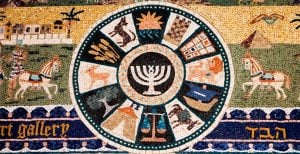We’ve just entered the Hebrew month of Shvat, the 11th month in the Jewish calendar. It’s technically the start of spring in Israel – which is surprising given that it’s still icy January!
Shvat is best known for its joyful spring celebration. Tu b’Shvat – literally the 15th of Shvat – is often called the New Year for Trees. But what does that mean, and why does it matter?
There are actually four different new years within the Jewish calendar. The first is what we call the New Year; on the first of Tishrei, we celebrate the creation of the world, and mark the beginning of the Sabbatical and Jubilee years in which the land is left to lie.
The second is the first of Nissan. This is the first month in the Jewish year (the dates of other festivals are counted with Nissan as month one). It’s also how the years of a Jewish kings’ reign in Israel were counted.
Next is the first of Elul, the sixth month, which is the new year for animal tithes. It also marked the start of the Jewish “tax year” in ancient Israel, as the general public would pay their annual animal tithes to the priests.
Finally, there’s Tu B’Shvat. Although it traditionally marks the beginning of spring, it also has a far more practical purpose: the fruit tithes were counted from this day.







